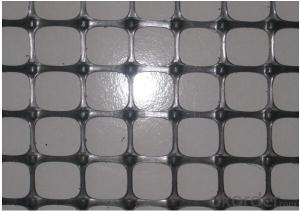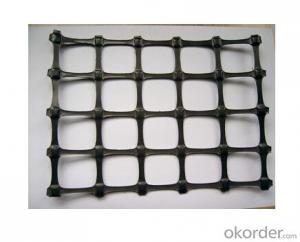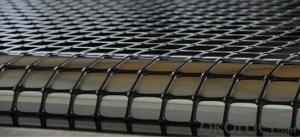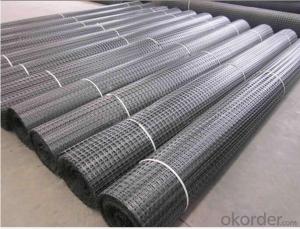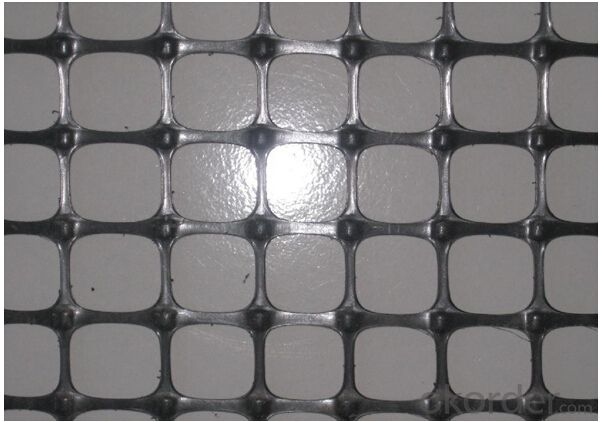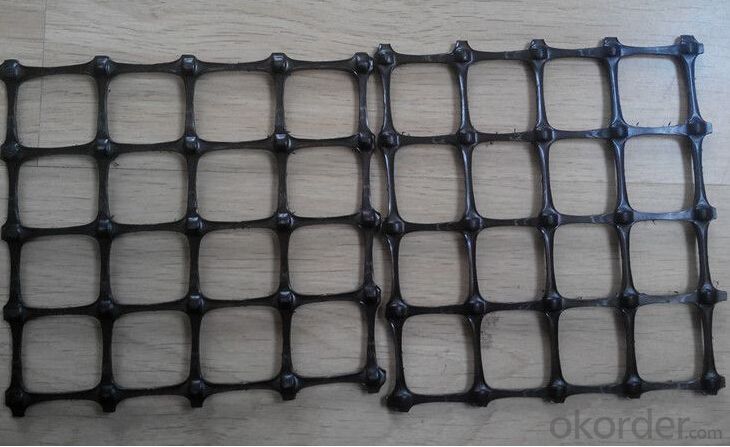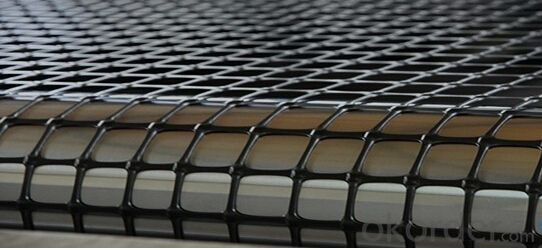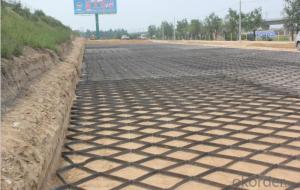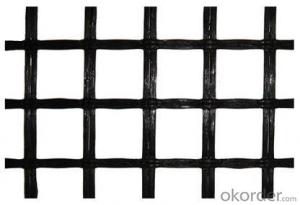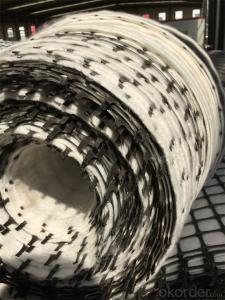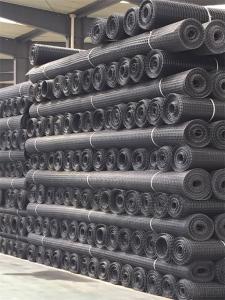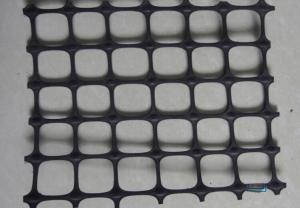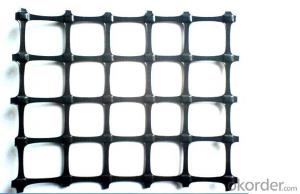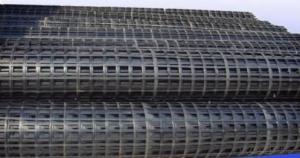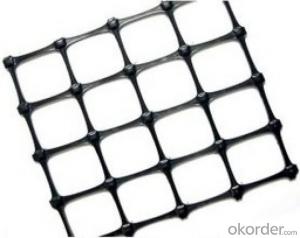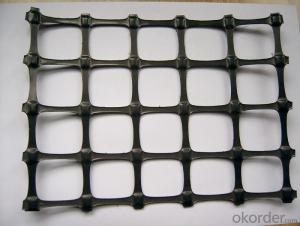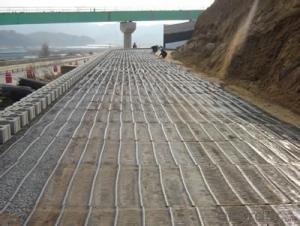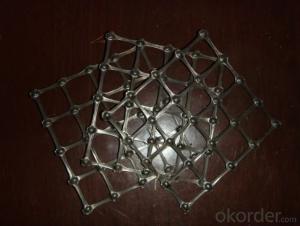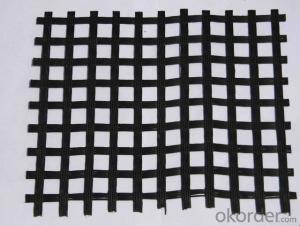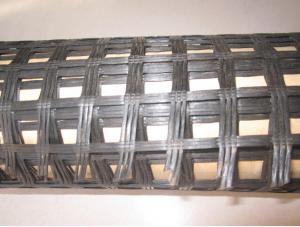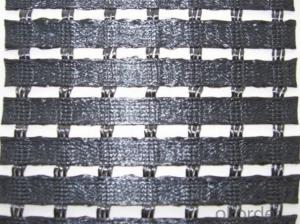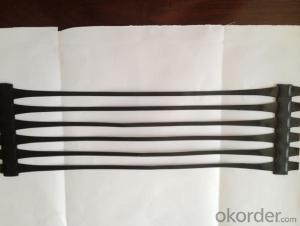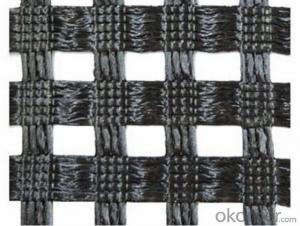Standardpark Geocells Polypropylene Biaxial Geogrid with CE Certification
- Loading Port:
- Qingdao
- Payment Terms:
- TT OR LC
- Min Order Qty:
- 5000 m²
- Supply Capability:
- 300000 m²/month
OKorder Service Pledge
OKorder Financial Service
You Might Also Like
1. Introduction of PP Biaxial Geogrid
Biaxial geogrid, made of high molecular polymer, is extruded into sheet and then punched into regular mesh pattern, and finally stretched in longitudinal and transverse directions
2. Introduction of PP Biaxial Geogrid
1). With high tensile strength in longitudinal and transverse directions
2).This structure can provide an chain system of more effective force bearing and spreading for the soil.
3. Application of PP Biaxial Geogrid
1). With high tensile strength in longitudinal and transverse directions
2).This structure can provide an chain system of more effective force bearing and spreading for the soil
4. Technical Data and Specification of PP Biaxial Geogrid
Spec Item | TGSG15-15 | TGSG20-20 | TGSG30-30 | TGSG40-40 | TGSG45-45 |
Longitudinal Tensile Strength ≥(KN/m) | 15 | 20 | 30 | 40 | 45 |
Transverse Tensile Strength≥(KN/m) | 15 | 20 | 30 | 40 | 45 |
Longitudinal Elongation≤(%) | 15 | ||||
Transverse Elongation≤(%) | 13 | ||||
Longitudinal Strength at 2% Strain ≥(KN/m) | 5 | 7 | 10.5 | 14 | 16 |
Transverse Strength at 2% Strain ≥(KN/m) | 5 | 7 | 10.5 | 14 | 16 |
Longitudinal Strength at 5% Strain ≥(KN/m) | 7 | 14 | 21 | 28 | 32 |
Transverse Strength at 5% Strain ≥(KN/m) | 7 | 14 | 21 | 28 | 32 |
Remark | Roll Length:50m Roll width:1~4m | ||||
5. RFQ:
1) What's your payment terms?
T/T, L/C at sight, etc
2) What's your delivery time?
Within 15-20days against your deposit or original L/C received
3) Can you accept third party test?
Yes, we can accept it totally, SGS, BSJ, etc are no problem for us.
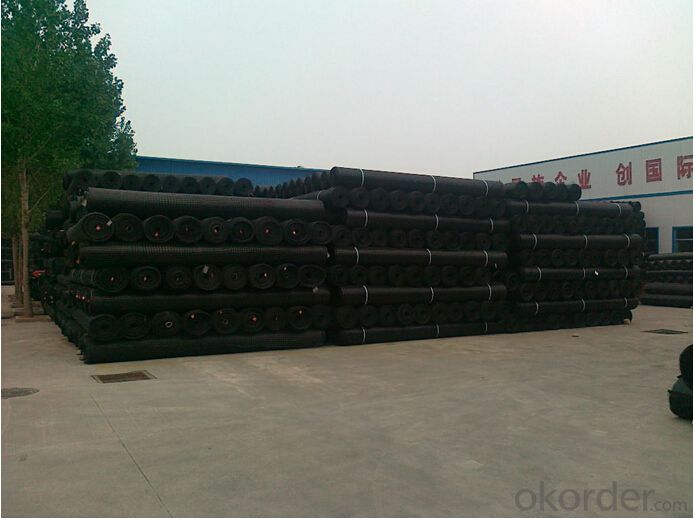
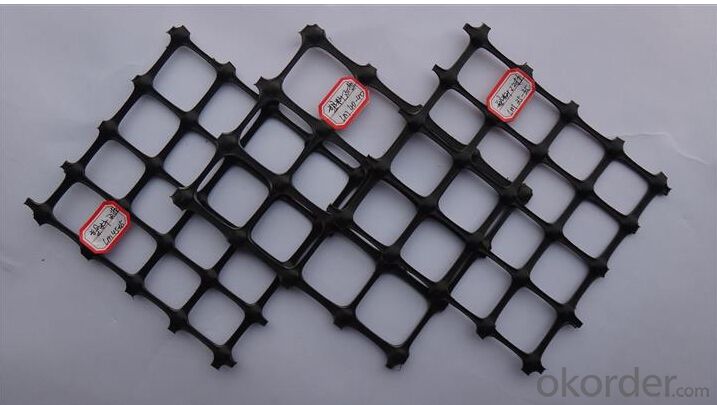
- Q: What is the meaning of two-way 50kN geogrid
- The code is GSL, GSL50 represents the longitudinal and transverse tensile strength more than 50KN of plastic geogrids.
- Q: How do geogrids help in reducing carbon footprint in construction projects?
- Geogrids help in reducing carbon footprint in construction projects by providing reinforcement to soil structures, thereby reducing the need for additional materials like concrete or asphalt. This results in a decrease in the usage of fossil fuel-based materials and the associated carbon emissions during production and transportation. Additionally, the use of geogrids reduces the need for excavation and land disturbance, which further minimizes carbon emissions and the environmental impact of construction projects.
- Q: How do geogrids enhance the performance of geocells?
- Geogrids enhance the performance of geocells by providing additional tensile strength and stability to the system. They help distribute loads more evenly, reducing the risk of deformation and improving overall load-bearing capacity. Geogrids also increase the confinement effect of the geocells, preventing soil and aggregate from shifting and improving overall stability.
- Q: How does the steel plastic geogrid stretch? Where do you have a special fixture to sell? What is the best thing to use?
- High strength, small deformation; 2 small creep; 3 corrosion resistance, long service life: steel plastic geogrid with plastic material as a protective layer, which is supplemented with a variety of additives in aging resistance, oxidation resistance, corrosion resistance to acid and alkali, salt and other harsh environment. Therefore, the steel plastic geogrid can meet the needs of more than 100 years of permanent engineering applications, and excellent performance, good dimensional stability. 4 convenient construction, short cycle, low cost, steel plastic geogrid laying, lapping, easy positioning and smooth, to avoid overlap, can effectively shorten the construction period, save the project cost 10%-50%. Engineering applications: highway, railway, bridge, road, pier, dam, slag field, such as soft soil foundation reinforcement, retaining wall and pavement crack resistance engineering and other fields. The effect of the project: 1, the intensity is big, the creep is small, adapts to each kind of environmental soil, can satisfy the high grade highway in the high retaining wall.
- Q: Can geogrids be used in geotechnical engineering?
- Yes, geogrids can be used in geotechnical engineering. Geogrids are commonly used for soil stabilization, reinforcement of retaining walls, and improving the performance of paved and unpaved roads. They provide tensile strength to soils and help distribute loads more efficiently, making them a valuable tool in geotechnical engineering projects.
- Q: Can geogrids be used in reinforcement of embankments over soft soils?
- Yes, geogrids can be used in the reinforcement of embankments over soft soils. Geogrids are commonly used in civil engineering applications to enhance the stability and strength of soil structures. They are effective in distributing loads and reducing settlement in embankments constructed over soft soils, providing additional reinforcement and improving overall stability.
- Q: Do geogrids enhance the load-bearing capacity of soil?
- Yes, geogrids enhance the load-bearing capacity of soil. Geogrids are typically made of high-strength materials and are designed to improve soil stability and reinforce weak or loose soils. They distribute the applied load over a wider area, reducing stress concentration and preventing soil deformation or failure. This reinforcement helps increase the load-bearing capacity of the soil, making it more suitable for various construction and engineering applications.
- Q: What are the durability characteristics of geogrids?
- Geogrids have excellent durability characteristics due to their high tensile strength and resistance to environmental factors such as UV radiation, chemical exposure, and temperature variations. They are designed to withstand heavy loads and prolonged use without significant deformation or degradation, offering long-term stability and performance in various soil reinforcement applications.
- Q: Can geogrids be used in reinforcement of retaining walls?
- Yes, geogrids can be used in the reinforcement of retaining walls. Geogrids are commonly used in retaining wall construction to enhance the stability and strength of the structure. They are typically placed within the soil layers of the wall to distribute the lateral forces and increase the overall resistance to soil movement. This reinforcement technique helps to prevent the wall from overturning or sliding, ensuring its long-term stability.
- Q: Are geogrids suitable for use in mechanically stabilized embankments?
- Yes, geogrids are suitable for use in mechanically stabilized embankments. Geogrids are widely used in such applications due to their high tensile strength and reinforcement capabilities. They help distribute loads, reduce settlement, and increase the stability of embankments.
Send your message to us
Standardpark Geocells Polypropylene Biaxial Geogrid with CE Certification
- Loading Port:
- Qingdao
- Payment Terms:
- TT OR LC
- Min Order Qty:
- 5000 m²
- Supply Capability:
- 300000 m²/month
OKorder Service Pledge
OKorder Financial Service
Similar products
Hot products
Hot Searches
Related keywords
